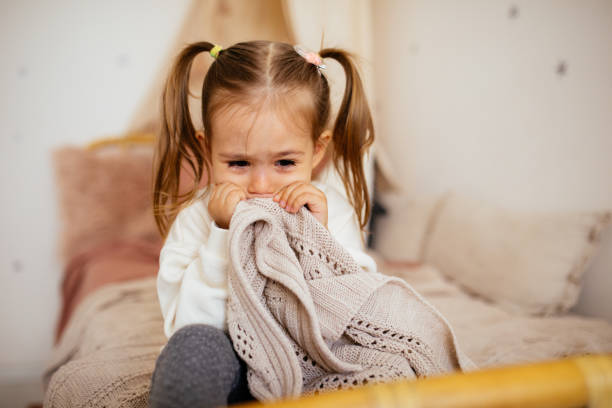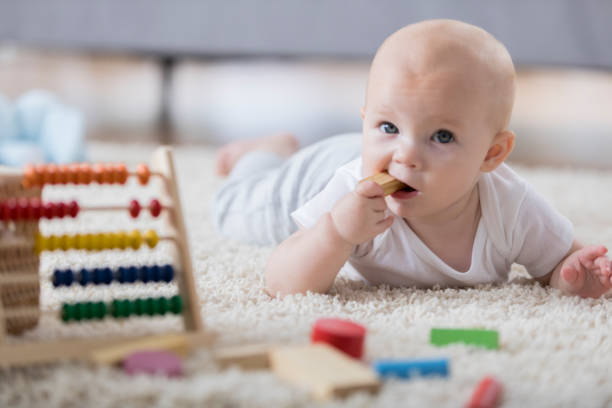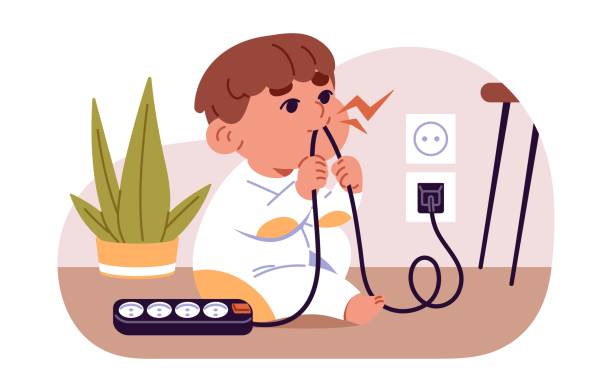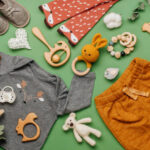For Autism – Chewing May Be a Form of Communication
As a parent or caregiver of a child with autism, you may have noticed that your child frequently chews on inedible objects. You’ll often find chewed shirts, broken pencils, and even toys and furniture with bite marks. This behavior can be confusing or even alarming, but it’s a common trait in children with autism spectrum disorder (ASD). Many children on the autism spectrum exhibit oral sensory behaviors, including chewing on inedible objects.
These seemingly frustrating habits are often a complex neural signal that is closely related to sensory processing differences and emotional regulation needs. Understanding why your child engages in this behavior is the first step to effectively helping them. Exploring the reasons behind chewing behavior in children with autism, including whether it is a clear sign of autism, and practical strategies for coping with chewing behavior, provides new perspectives for parents seeking answers.
Chewing in Children with Autism: A Neurological and Sensory Language
Children With Autism Love To Chew Everything As A Sensory Perception
Chewing inedible objects, often referred to as oral sensory seeking, is a common repetitive behavior in children with autism. For many neurodivergent children, chewing is more than a habit; it is a form of communication. It can be a sign of overstimulation, understimulation, or anxiety. This sensory behavior is closely tied to the way the brain processes information about the environment. It can manifest as chewing on shirt sleeves, pens, toys, or even gnawing on household items.
For children with autism, chewing behavior may continue long after this developmental stage due to differences in sensory processing, emotional regulation needs, or communication difficulties.
Some of the most common reasons my autistic child chews everything include:
There are several factors that may explain why does my autistic child chew on everything. Based on research and expert insights, we will explore the main reasons:
- Oral sensory seeking: The mouth craves stimulation.
- Emotional regulation: Chewing reduces anxiety and increases focus.
- Underdeveloped oral-motor control: Still learning how to coordinate muscles for speech or swallowing.
- Habitual stimming: Provides repetitive sensory feedback.
The specific reasons are as follows:
| Reason for Chewing | Description | Potential Risks |
|---|---|---|
| Sensory Seeking | Chewing provides calming sensory input, especially for hyposensitive children. | Damage to teeth or objects if unsafe items are chewed. |
| Anxiety Relief | Helps manage stress or sensory overload in overwhelming environments. | May persist if underlying anxiety isn’t addressed. |
| Communication | Used to express needs or seek attention, especially in non-verbal children. | Misinterpretation of needs if not addressed properly. |
| Pica | Involves swallowing non-food items, potentially due to sensory needs or deficiencies. | Serious health risks like poisoning or choking. |
Is Chewing a Recognized Sign of Autism?
Chewing behavior is common in children with autism, but it is not a clear indicator of autism. Many non-autistic children also engage in similar behaviors, such as chewing pencils when bored or biting nails when anxious. However, persistent and intense chewing behavior, especially after early childhood, may indicate sensory processing issues, which are common in autism.
Is Chewing Clothes a Sign of Autism?
Chewing clothes is often one of the first noticeable signs in children with undiagnosed autism spectrum disorder (ASD). While not exclusive to ASD, persistent oral behaviors—especially past toddler age—can be a red flag when combined with other traits such as:
- Repetitive movements
- Sensory sensitivities
- Social or communication challenges
Similarly, putting random things in the mouth beyond the teething stage can also raise questions. Pediatricians often ask parents, “why does my autistic child chew on everything,Is putting random things in your mouth a sign of autism?” The answer: It can be—especially if it continues past age 3 and interferes with daily functioning.
For high-functioning children with autism, chewing behavior may have less to do with developmental delays and more to do with sensory overload or stress management. The Diagnostic and Statistical Manual of Mental Disorders (DSM-5) includes sensory reactivity as a diagnostic criterion for autism, highlighting its importance in autism (Psych Central – Oral Fixation in Autism).

How To Manage Chewing Behavior In Autism
Managing a child’s chewing behavior requires understanding their needs, alleviating anxiety about stress and their development, and providing safe and effective alternatives. Here are some practical strategies for addressing chewing issues associated with autism:
1. Provide Safe Alternatives
Offer chewable items designed for sensory seeking, such as chewable jewelry, pencil toppers, or sensory chews. These products are safe, durable, and specifically crafted to meet oral sensory needs. Websites like Sensory Direct offer a variety of options that won’t damage teeth or pose choking hazards.
2. Offer Chewy Foods
Incorporate healthy, chewy snacks into your child’s diet, such as granola bars, carrot sticks, apple slices, or dried fruits. These foods provide oral sensory input while offering nutritional benefits. For example, offering a crunchy snack during stressful situations can redirect chewing from inappropriate objects.
3. Create a Sensory Diet
A sensory diet is a personalized plan of sensory activities tailored to your child’s needs. It might include physical activities like swinging or jumping, tactile experiences like playing with textured toys, or oral sensory input through chewing. An occupational therapist can help design a sensory diet to reduce the need for inappropriate chewing (Sensory Smarts – Sensory Diet Activities).
4. Behavioral Interventions
Work with a behavioral therapist to develop strategies that encourage alternative behaviors. For instance, you might reward your child for using a chewable item instead of their clothing or teach them to use a visual cue to signal when they need a chewing break. Gradual reinforcement can help reduce the behavior over time.
5. Consult with Professionals
If chewing is persistent or severe, consult an occupational therapist or developmental pediatrician. They can assess your child’s sensory processing and recommend interventions like sensory integration therapy or applied behavior analysis (ABA). These professionals can also identify if the behavior is linked to pica or other concerns requiring medical attention.
Coping Tools and Daily Management
For caregivers dealing with chewed-up shirts and soggy sleeves, here are daily management tips:Coping Tools and Daily Management
- Rotate chew tools to maintain novelty and prevent overuse
- Offer oral alternatives during transitions (e.g., going to school, entering busy places)
- Include crunchy or chewy foods in meals to naturally meet oral needs (e.g., dried fruits, bagels, carrot sticks)
Understanding autism chewing problems means integrating support into home routines, school environments, and therapy plans—not waiting for the behavior to go away on its own.

Get Out of the Trouble – Strategies for Coping with Stressful Sensory Needs
Managing the sensory needs behind chewing can be challenging, but creating a supportive environment can make a significant difference. Here are additional tips:
- Create a calm space: Designate a quiet area where your child can retreat when overwhelmed, reducing the need to chew for stress relief.
- Use visual supports: Visual schedules or cues can help your child understand when it’s appropriate to use chewable items.
- Involve your child: If your child is verbal, discuss their chewing preferences and involve them in choosing safe chewable items to increase their sense of control.
How To Stop Your Child From Chewing Randomly?
Experts recommend not trying to eliminate the behavior completely, but instead meeting sensory needs in safer, more practical ways.
Here are some evidence-based strategies:
- Introduce sensory chew tools
FDA-approved silicone chew necklaces or pencil toppers are safer alternatives. These are discreet enough for school use and designed for kids with autism chewing problems. - Identify triggers
Keep a journal. Is your child chewing more when tired, anxious, or in noisy environments? - Occupational therapy (OT)
OT with a sensory integration specialist can design a personalized sensory diet—a routine that includes sensory activities to reduce excessive oral stimming. - Behavioral reinforcement
Reinforce positive alternatives instead of scolding. Chewing isn’t misbehavior—it’s a message.
Chewing in High-Functioning Autistic Children – Hidden Challenges
Understanding Chewing: What Emotions Are Revealed?
According to child psychologist Dr. Lindsey Shearer (2021), mouth behaviors in autism often signal an unmet need:
- Stress release
- A need for control
- A search for predictability in a chaotic world
For children who struggle to verbalize discomfort, chewing becomes a language of its own. Recognizing this can shift a parent’s mindset from frustration to empathy.
Chewing and Self-Soothing in High-Functioning Autistic Children
Children with high-functioning autism (now often categorized under Level 1 ASD) may be more adept socially or verbally, but that doesn’t mean their sensory needs disappear. In fact, many high-functioning autistic children struggle quietly with oral sensory needs that manifest as chewing on:
- Shirt collars
- Pencil erasers
- Hoodie strings
- Fingernails
For these children, chewing serves a dual function: self-soothing and sensory balancing. However, because they’re often expected to “know better,” these behaviors may be misunderstood or punished.
Children With Autism Chewing Non-edible Objects – Explore The Risks Behind It
Children with autism often chew on non-food items—a behavior known as pica when it involves swallowing. While not all chewing is dangerous, it can pose:
- Choking hazards
- Dental damage
- Exposure to toxins
That’s why it’s important not to dismiss the behavior as simply “weird” or “bad.” Instead, understanding the underlying neurological reasons and redirecting the need to safer chewing options is essential.

When to Seek Professional Help
While some chewing is typical, certain signs indicate the need for professional evaluation:
- Swallowing non-edible items: This could suggest pica, which carries risks like choking or poisoning.
- Physical harm: Chewing that damages teeth, gums, or causes mouth injuries.
- Interference with daily life: If chewing disrupts school, social interactions, or daily routines.
It may be time to involve clinical specialists, including:
- Pediatric occupational therapists
- Speech and feeding therapists
- Developmental pediatricians
These professionals assess the severity of the sensory need and guide families to interventions to improve the behavior long-term. Healthcare providers can assess whether the behavior is related to a sensory need, anxiety, or medical condition and recommend appropriate interventions. Early intervention is key to keeping your child safe and healthy.
Chewing is a Clue, Not a Problem
Rather than viewing oral behaviors as a nuisance, think of them as a window into your child’s world. Chewing is often their way of saying “something doesn’t feel right and I’m working on correcting it.” Understanding why does my autistic child chew on everything is critical to providing the support they need. Whether it’s due to sensory seeking, anxiety, or communication difficulties, chewing is often a way for children with autism to explore their world. By providing safe alternatives, creating a sensory-friendly environment, and seeking professional guidance when needed, you can help your child meet their sensory needs in healthier ways.
Every child with autism is unique, and strategies that work for one child may not work for another. By providing support, the right tools, and professional guidance,you can go beyond stopping a behavior and address deep-seated sensory needs to help your child feel safer, calmer, and more engaged with their body.


